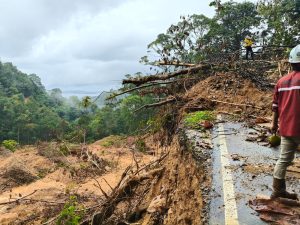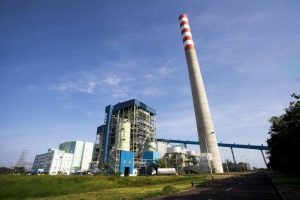Jakarta—The Ministry of Energy and Mineral Resources (MEMR) stated that Indonesia still needs an additional USD 14 billion to achieve the new and renewable energy (NRE) mix target of 23% by 2025. Until mid-2024, the realisation of the NRE energy mix had only reached 13.93%, with a target of 19.5% by the end of this year.
Investment realisation in the New, Renewable Energy and Energy Conservation (EBTKE) subsector until the first semester of 2024 has only reached USD 580 million, or around 46.8% of this year’s target of USD 1.23 billion. To meet the energy needs of 8,224.1 MW, equivalent to 8.2 gigawatts (GW), an additional investment of USD 14 billion is still needed.
Director General of New, Renewable Energy and Energy Conservation (EBTKE), Eniya Listiani Dewi, revealed that a strong commitment in terms of investment and infrastructure development is still needed to achieve this target.
“Investment is one of the key factors that has not been optimized, in addition to commitment and infrastructure that we need to encourage so that achievements can be clearer,” she said in a written statement, Wednesday, September 11.
“This includes various types of renewable energy such as biomass, biogas, waste, geothermal, water, hydro, and batteries,” Eniya explained.
Eniya highlighted that one of the challenges in the development of NRE is the domestic component-level (TKDN) regulation, which actually limits the development of NRE projects because many technological components still have to be imported. However, the government has issued Minister of Energy and Mineral Resources Regulation Number 11 of 2024 to overcome these obstacles.
“This regulation is a breakthrough that will accelerate investment in the NRE sector. The TKDN issue is often considered an obstacle, and this new regulation is expected to pave the way for faster investment,” she said.
Some NRE projects that began running after the issuance of the TKDN regulation include the Floating Solar Power Plants (PLTS) in Singkarak, Saguling, and Karangkates, as well as the Hululais, Dieng, and Patuha Geothermal Power Plants (PLTP).
The government continues to apply the provisions on the import of NRE components allowed until June 2025, according to Government Regulation Number 29 of 2018. However, PLTS that use imported components must have a contract with the government through a Power Purchase Agreement (PPA) valid until the end of 2024.
“With this import provision, we still ensure that the PLTS that will be imported must already have a PPA and be committed to completing the project on time,” Eniya added.
The government is optimistic that by accelerating regulations and adjusting TKDN rules, investment needs in the NRE sector can be met so that the renewable energy mix target of 23% by 2025 can be achieved, while supporting an environmentally friendly energy transition. (Hartatik)















